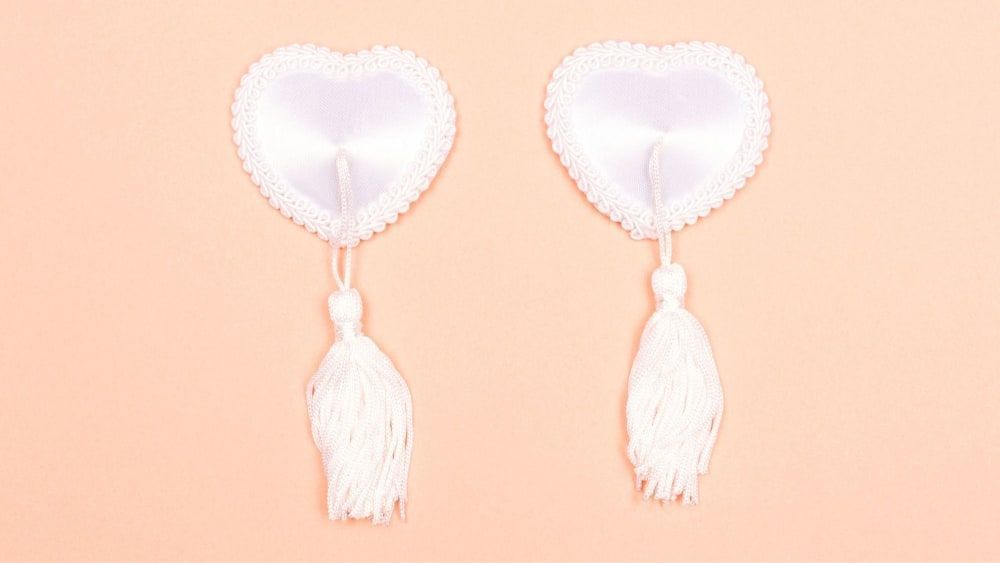Nipple Retraction: What it is, Causes, Treatment & More
Are you worried about inverted or retracted nipples? An inverted nipple can be normal or a sign of some underlying medical issues. Read to know more.

The variation among nipples is vast. Nipples can be wide, small, dark, or light colored.
They can also protrude inwards or outwards and can be flat or pointed.
These variations can have genetic causes or can be brought on by hormonal fluctuations. Inverted or retracted nipples are one such type of nipples. Find out if they are normal and why they are caused.
Nipple Retraction Meaning/Inverted Nipple
An inverted nipple sinks inwards rather than pointing out. According to some experts, there is a slight difference between inverted nipple meaning and nipple retraction meaning. Unlike an inverted nipple, a retracted nipple lies flat against the breast.
Nipple Retraction Causes
A woman's nipple can be retracted right from birth or develop later in life. What are some inverted nipple causes? Let's find out.
Causes of nipple retraction
1. Aging can cause nipple retraction
As a woman ages, she goes through tremendous bodily changes. Nipple retraction can also be a part of that change. It occurs gradually as you age and is a benign process- meaning non-cancerous and unrelated to any medical condition.
2. Mammary duct ectasia leads to nipple retraction
This condition usually occurs during perimenopause. This is when one or more milk ducts underneath your nipple expands. The duct wall thickens, the milk duct is filled with a sticky fluid, and this causes blockages. It's a non-cancerous condition.
Nipple retraction is one of mammary duct ectasia symptoms, accompanied by breast tenderness, inflammation, and redness.
Note: Some women with this condition may experience no symptoms whatsoever.
Also read: Why do my breasts pain before periods? Causes, prevention, and cure
3. Paget's disease of the breast can cause nipple retraction
Paget's breast disease is a rare, cancerous condition related to breast cancer. It's an inverted nipple breast cancer. It affects the nipples and the areola (dark skin around the nipple) by causing eczema-like textures. Affected skin of the nipple or areola appears inflamed or itchy.
Common symptoms of this are -
- Inverted or retracted nipples
- Dryness or irritation around the skin of the nipple
- Nipple discharge
- Lump in the breast.
4. You can be born with nipple retraction
If thoughts like "is it normal to have inverted nipples at puberty" worry you, then don't get scared. Nipple retraction or inversion can be something you're born with.
It's not usually a cause of concern and is entirely normal.
5. Nipple retraction due to breast surgery
Scarring during breast surgery can also cause nipple retraction or nipple inversion. During breast surgery, the incision to remove fat often causes this type of scarring. The scar might heal with time but may cause nipple retraction in some cases.
How to identify a retracted or an inverted nipple?
If your nipple is pointed inwards or lays flat rather than protruding out, you have an inverted or retracted nipple.
If you cannot determine it with your eyes, you can do a pinch test.
How to do it?
- Gently press your areola (the dark skin around the nipple). If your nipples don't become erect, they can be flat. But if they retract even upon pinching, they are inverted nipples.
- Inverted nipples erection doesn't occur by stimulation or sensation. If your nipples become erect during a pinch test, you may not have an inverted nipple. That is to say; retracted nipples do not become erect with such stimuli.
How to solve for an inverted nipple?
Hoffman's technique
- Point your thumbs on either side of the nipple. Make sure that your thumbs are at the base of the nipple.
- Press your thumbs firmly into the breast tissue.
- While still putting pressure on the breast tissues, gently withdraw your thumbs away.
- Move your thumbs all over and around your nipple and repeat the process.
This technique might help you for the time being to protrude your nipple.
However, there are no studies about this technique's effectiveness. Every woman's body type is different. Therefore, it may or may not work for you.
Retraction of Nipple in Breast Cancer
To understand the role nipple retraction plays in breast cancer, we must first understand what is nipple retraction? The best way to explain the term nipple inversion or nipple retraction is by defining it as a medical condition in which the breast becomes inverted or turns inward.
This occurs when there is inflammation or scarring of tissue behind the nipple. It arises mainly because of physical abnormalities in women, including breast cancer.
If a female has breast cancer, nipple retraction occurs when the tumour attacks the duct behind the nipple—resulting in it being pulled inwards. In case of retraction of the nipple in breast cancer, you should consult with a doctor immediately, especially when other symptoms accompany it.
The point to note is that when you consult your physician for a nipple inversion, it is likely that they will ask you to undergo a complete examination. It will include imaging tests, like X-rays, mammograms, breast ultrasound, magnetic resonance images or MRI of the breast.
How Will a Doctor Diagnose a Retracted Nipple?
If you visit your doctor only because you are suffering from nipple retraction, it is likely that the physician will first study your medical history. It will be followed by a suggestion to examine your nipples and breasts.
The doctor may also ask you to undergo a diagnostic mammogram or sonogram to gauge the seriousness of the condition through images. In addition, you may also need to do an MRI if cancer is suspected after you undergo all necessary tests, including a needle biopsy. This procedure will help extract tissue from the nipple or areola region for further analysis.
Can You Treat a Retracted Nipple?
It is important to understand that nipple retraction may not necessarily be because of any medical condition. As a result, treatment may not be required.
If you wish to change the appearance of your nipples for aesthetic reasons, there are solutions such as the Hoffmann Technique and suction devices that can be used that may be helpful in the treatment of nipple retraction conditions.
Additionally, there are surgical nipple retraction solutions that can help you get a permanent longer-lasting solution. However, it is advisable not to attempt these treatments without consulting your doctor.
If you decide to undergo a surgical operation to resolve the nipple retraction, then, generally speaking, your nipple should go back to its standard shape. In case you are suffering from nipple retraction due to an underlying condition such as breast cancer, you can discuss the aesthetic treatments options that are safe for you with your doctor.
Can I solve retracted nipples by eating herbs and lifestyle changes?
One cannot treat inverted or retracted nipples by making lifestyle or dietary changes. It is a normal condition. In all likelihood, it doesn't require medical attention.
If you still want to change your nipples look, then visit a doctor. Your doctor might suggest a surgical correction to treat your retracted nipple.
Also read: Why are my boobs sore after periods? Is this normal?
When to visit the doctor?
Nipple inversion doesn't need treatment in most cases. However, there are some circumstances under which you should seek medical advice -
- If your nipples change shape suddenly
- If you feel a lump in your breast
- Skin irritation or a rash around your breast area
- Breast swelling
- Nipple discharge (bloody or non-milky)
Conclusion
The takeaway then about this condition, known as nipple retraction, is that there could be multiple nipple retraction causes. The first is that it is a normal variation of the nipple type. The second is more severe and could arise when you are suffering from a painful underlying condition like breast cancer, and this is when you need to see a doctor to get treatment.
Frequently Asked Questions (FAQs)
Is It Normal to Have Nipple Retraction?
Yes, It is indeed normal to have nipple retraction, as it can be a congenital condition. In such cases, inverted nipples, when stimulated, will generally face outwards. If you were born with inverted nipples, you do not have to visit your doctor to get an assessment. However, if your nipple retraction is related to breast cancer, it is necessary to consult your physician.
When Should I Worry About Inverted Nipples?
You should worry about inverted nipples when you experience signs and symptoms of breast cancer along with nipple retraction. Some symptoms of breast cancer are lump, thickness on your breast, or formation of dimples and other skin changes on your breasts.

